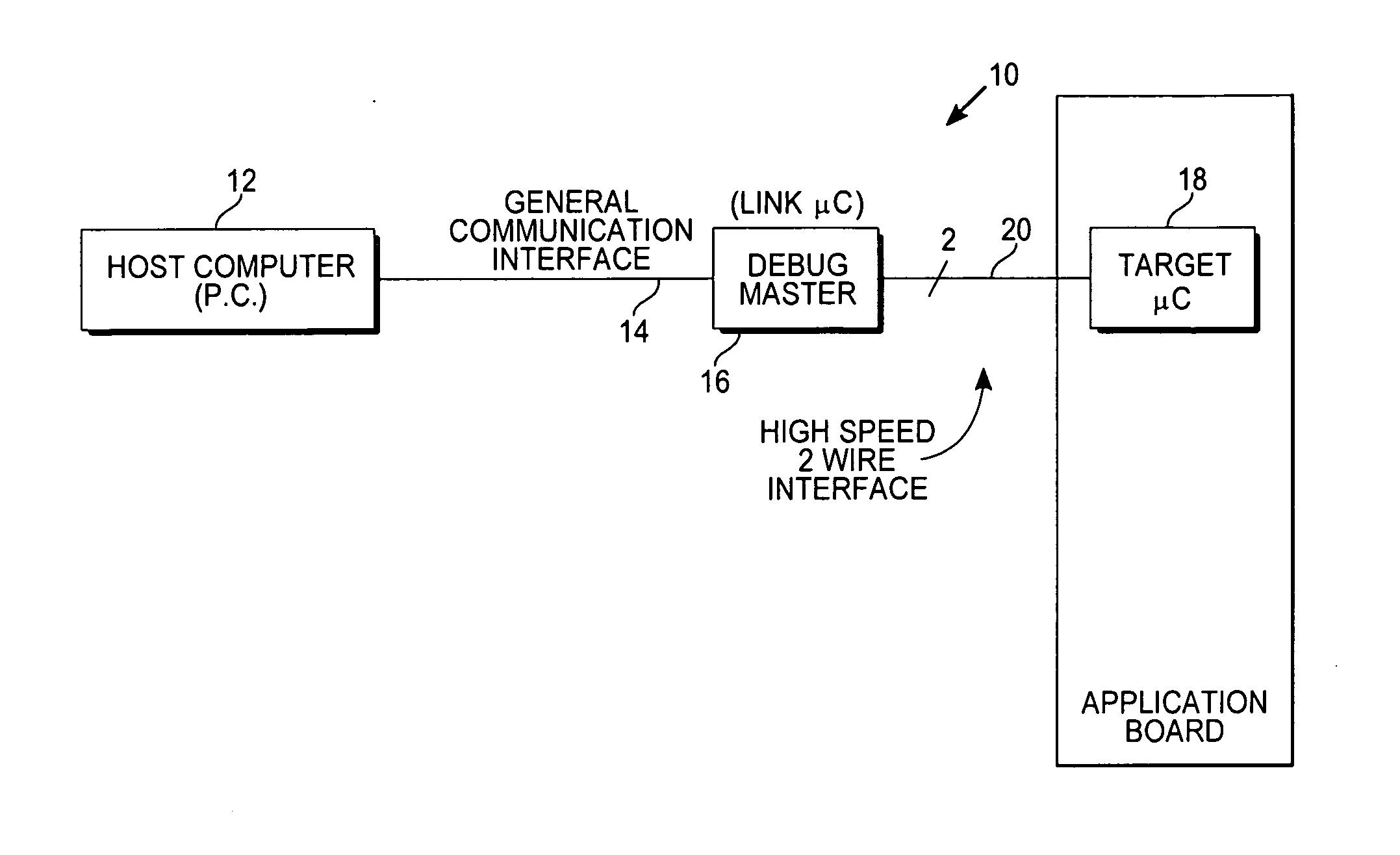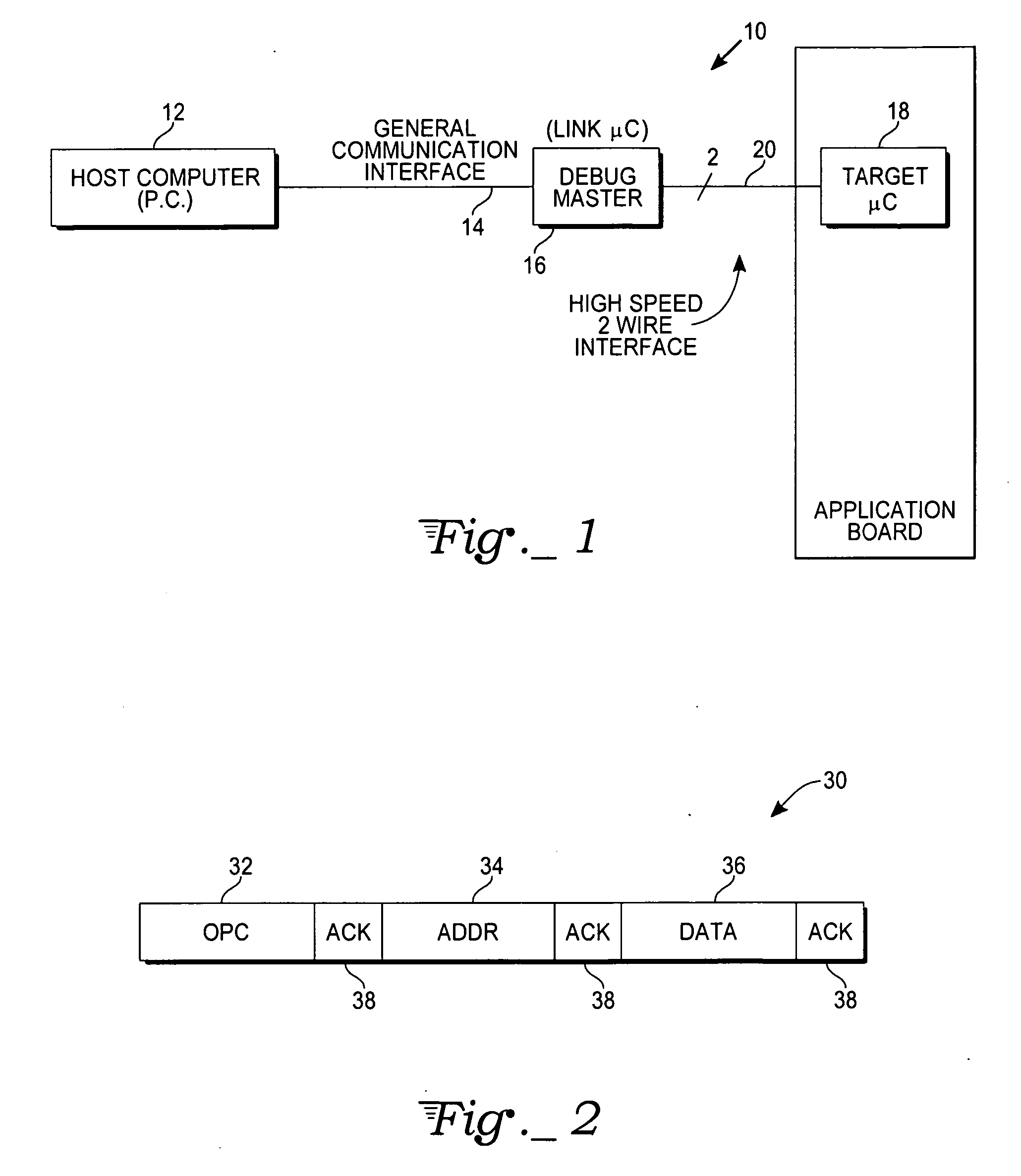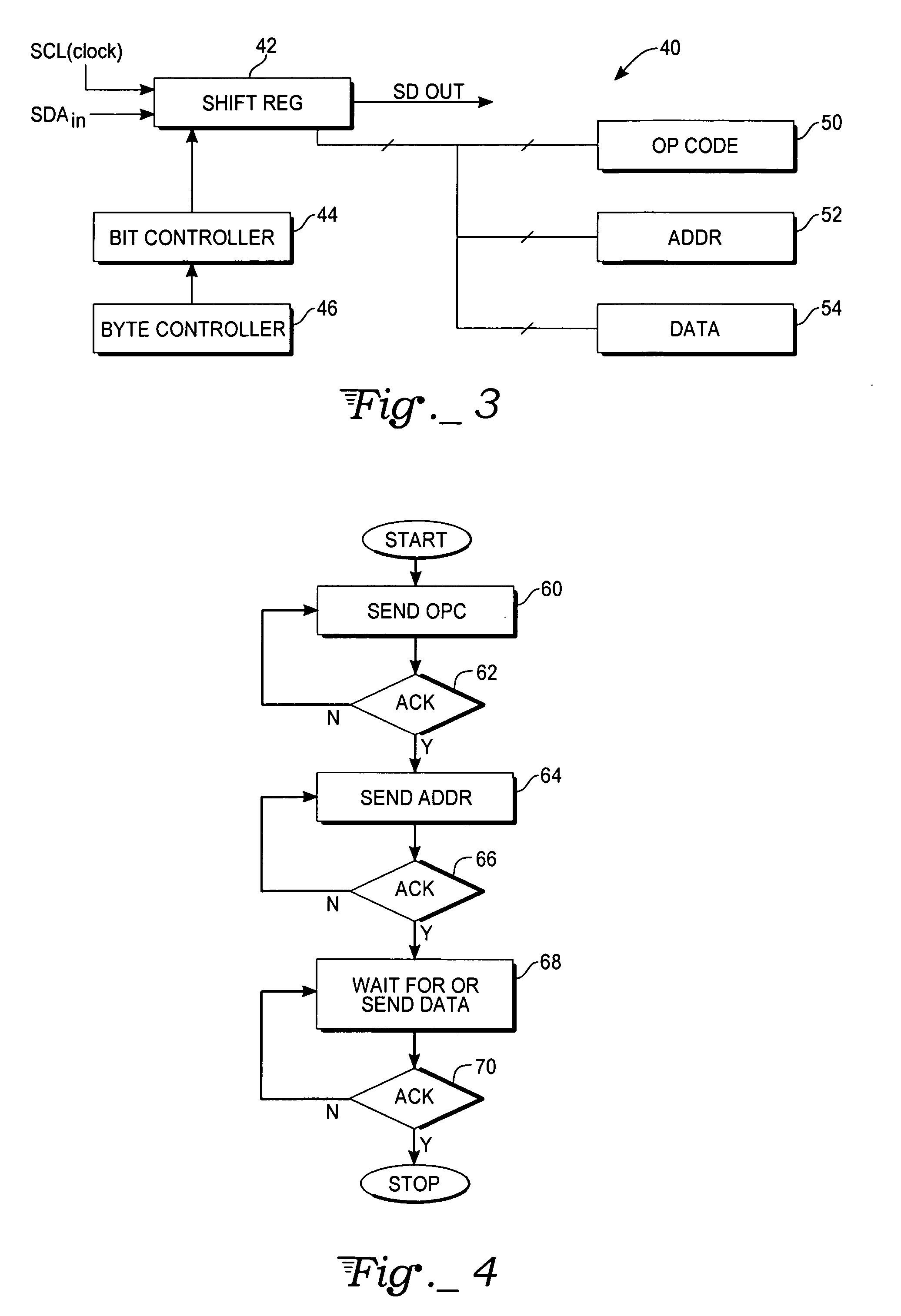Dual CPU on-chip-debug low-gate-count architecture with real-time-data tracing
a low-gate-count, dual-core technology, applied in the field of microcontrollers, can solve the problems of high cost of expansion chips, and inability to debug various microcomputer applications, so as to reduce the amount of intrusion, reduce the cost of debugging, and increase the cost of the target microcontroller.
- Summary
- Abstract
- Description
- Claims
- Application Information
AI Technical Summary
Benefits of technology
Problems solved by technology
Method used
Image
Examples
Embodiment Construction
[0019]FIG. 1 shows a microcontroller debugging system 10 that includes a Host computer, such as a personal computer, 12 that is connected through a general communication interface 14 to a Link microcontroller 16. The Link microcontroller 16 functions as a debug master for a slave Target microcontroller 18. The Link microcontroller 16 and the Target microcontroller 18 communicate through a high-speed 2-wire interface 20. The Target microcontroller 18 is typically embedded in an application environment that includes an application circuit board that provides, for example, other integrated circuit packages, relays, sensors, actuators, etc., for a particular application. The Link microcontroller 16 and Target microcontroller 18 are different copies of the identical chip.
[0020] As previously mentioned, a microcontroller includes a microprocessor, code memory, peripherals, and port registers. The microprocessor itself includes an arithmetic / logic unit, SRAM / register files, an address con...
PUM
 Login to View More
Login to View More Abstract
Description
Claims
Application Information
 Login to View More
Login to View More - R&D
- Intellectual Property
- Life Sciences
- Materials
- Tech Scout
- Unparalleled Data Quality
- Higher Quality Content
- 60% Fewer Hallucinations
Browse by: Latest US Patents, China's latest patents, Technical Efficacy Thesaurus, Application Domain, Technology Topic, Popular Technical Reports.
© 2025 PatSnap. All rights reserved.Legal|Privacy policy|Modern Slavery Act Transparency Statement|Sitemap|About US| Contact US: help@patsnap.com



